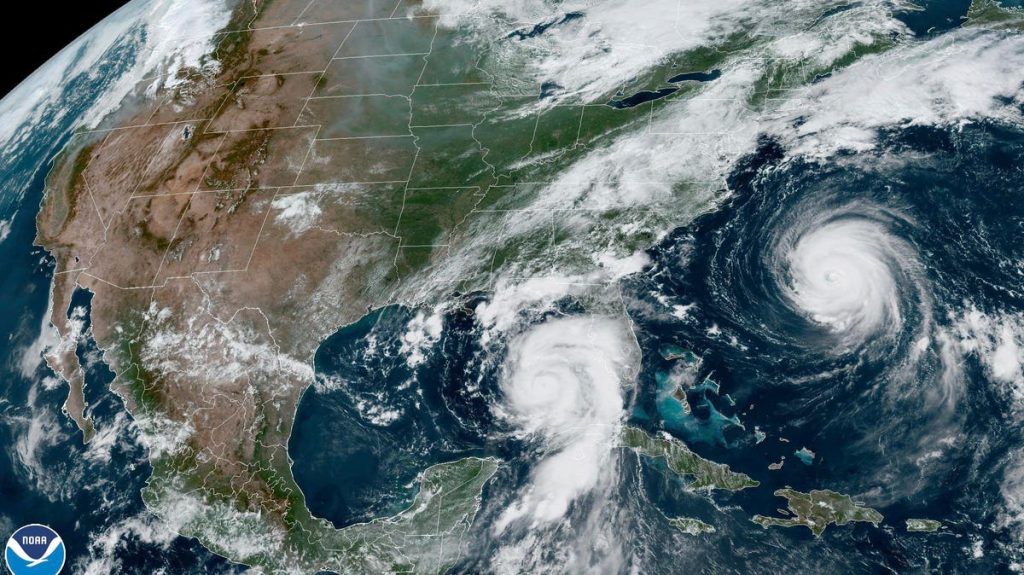Topline
As experts believe climate change is worsening rapid intensification of hurricanes worldwide, Hurricane Idalia appeared to demonstrate this phenomena before touching down in Florida Wednesday with winds of 125 mph, causing severe damage and resulting in at least two deaths.
Key Facts
Experts warned that Hurricane Idalia was rapidly intensifying as it moved through the Gulf of Mexico and made landfall in Florida’s Big Bend region on Wednesday.
Idalia went from a Category 3 storm Tuesday morning with winds of 75 mph to a Category 4 storm with winds of 130 mph Wednesday morning in just 24 hours, before dwindling to a Category 1 storm later that day.
Rapid intensification is a sharp increase in the maximum speed of winds of a tropical cyclone of at least 30 knots over a 24-hour period, according to the National Hurricane Center.
Because warm waters fuels tropical cyclones, the Weather Channel suggests an increase in ocean temperatures due to climate change could be a reason for Idalia’s rapid intensification.
Research published in Atmosphere found warm oceans may potentially trigger rapid intensification as storms pass through.
Waters across the world have experienced record-high temperatures this year, including those in the south of Florida near Manatee Bay, which saw triple-digit numbers in July comparable to the temperature of hot tubs.
Crucial Quote
Brian McNoldy, a hurricane researcher at the University of Miami, told Vice that “as the oceans warm a little bit, you’re just gradually making [rapid intensification] more likely.”
Key Background
The increase in rapid intensification has been linked to climate change. The National Oceanic and Atmospheric Administration concluded that recent spikes in rapid intensification are a possible side effect of human influences on tropical activity. Meteorologists at Yale University’s Yale Climate Connections believe the “unnatural effects of human-caused global warming” will only make hurricanes more destructive. A study published in Advancing Earth and Space Science discovered that between 1990 and 2021, global extreme rapid intensification events that saw winds increase by at least 50 knots within 24 hours significantly increased from 17% to around 35%. The study also found that the number of named storms in the Atlantic has almost tripled from 1990 to 2021. A 2019 study published in Nature Communications found a “highly unusual” upwards trend of rapidly intensifying hurricanes in the Atlantic between 1982 and 2009.
Recent Hurricanes
Hurricanes that have rapidly intensified have been a common occurrence in recent years.
- In 2022, Hurricane Ian rapidly intensified twice: First on September 25, 2022, and then again as it headed toward Cuba the next day. Ian was responsible for 150 deaths and around $112 billion in damage, making it the most expensive hurricane in Florida’s history.
- In 2021, Hurricane Ida was a Category 4 storm that rapidly intensified several times, devastating Louisiana and causing $75 billion in damages and over 90 deaths.
- In 2017, Hurricane Harvey underwent rapid intensification, quickly strengthening from a Category 3 to a Category 4 storm within the same day. It resulted in $125 billion in damages and 88 deaths. Warm waters intensified Harvey’s damage, according to a study published in Environmental Research Letters.
- In 2017, Hurricane Maria went through an extreme rapid intensification, strengthening from a Category 1 to a Category 5 storm. It caused over $94 billion in damages to Puerto Rico (offset only slightly by the rolls of paper towels flung at residents by then President Trump) and nearly 3,000 deaths.
Tangent
Florida officials have confirmed that at least two people have died as a result of Idalia. One of the victims is an unnamed 40-year-old man who died early Wednesday morning in Pasco County after losing control of his vehicle while driving. A 59-year-old man also died Wednesday morning in Gainesville, Florida. He swerved into a ditch and hit a tree while driving through the storm. Over 275,000 homes and businesses in Florida and another 64,000 in Georgia were without power Wednesday morning. The damage of the storm also resulted in an electrical transformer exploding in Georgia, widespread coastal damage and flooding and Florida’s Steinhatchee River’s current reversing due to Idalia’s intense storm surge.
Hurricane Idalia: At Least Two Killed As Storm Causes Widespread Damage In Florida And Weakens To Category 1 (Forbes)
What Warmer Oceans Mean For The Environment—From Dangerous Storms To Severe Flooding (Forbes)
Read the full article here









